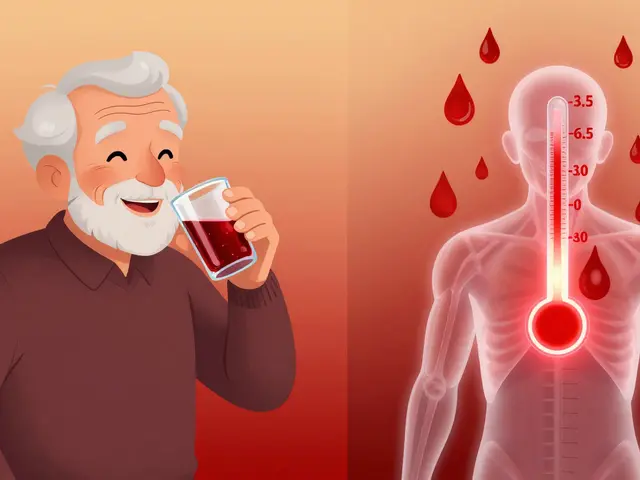Warfarin: what you need to know to stay safe
Warfarin is a commonly used oral anticoagulant (blood thinner) prescribed for conditions like atrial fibrillation, deep vein thrombosis, pulmonary embolism, and mechanical heart valves. It works by lowering the blood’s ability to form clots, which reduces stroke and clot risk — but it also raises bleeding risk. That means small habits and regular testing make a big difference.
How monitoring and dosing work
Your response to warfarin is tracked with the INR (international normalized ratio). Most people aim for an INR of about 2.0–3.0. People with some mechanical valves or unusual clotting problems may need a higher target. When you start warfarin, clinics often check INR every few days until it stabilizes. Once stable, checks usually move to every 2–4 weeks, then sometimes every 4–12 weeks if things stay steady. Doses are adjusted based on INR results — the same pill dose won’t fit everyone.
Do not stop warfarin suddenly. Stopping raises your clot risk quickly. If your doctor plans a temporary stop for procedures, they will tell you whether you need a short-acting blood thinner (heparin) as a bridge.
Common interactions and practical tips
Many drugs and foods change how warfarin works. Antibiotics, some antifungals, certain heart and psychiatric drugs, and herbal supplements can raise or lower INR. Foods high in vitamin K (kale, spinach, broccoli) reduce warfarin’s effect. You don’t have to avoid these foods completely — instead, keep your intake consistent day to day so your dose and INR stay predictable.
Avoid regular use of nonsteroidal anti-inflammatory drugs (NSAIDs) like ibuprofen unless your doctor approves; they increase bleeding risk. Also tell any provider or dentist you take warfarin before procedures. Carry a list of all your medicines and supplements so your prescriber can check for interactions.
Watch for bleeding signs: easy bruising, blood in urine or stool, nosebleeds that don’t stop, heavy menstrual bleeding, or sudden severe headache. If you notice these, contact your healthcare team right away. For minor cuts, apply pressure and seek advice if it won’t stop.
Practical daily tips: take warfarin at the same time each day, use a single pharmacy when possible, bring INR results to appointments, wear medical ID saying you take warfarin, and ask before starting new meds or supplements. If you drink alcohol, talk with your doctor — irregular drinking can change INR unpredictably.
Special situations: warfarin is typically avoided in pregnancy because it can harm the fetus; women planning pregnancy should discuss alternatives. If you’re unsure about missed doses or have questions after a new prescription, call your prescriber or pharmacist rather than guessing.
Warfarin requires attention, but with steady monitoring, clear communication with your health team, and simple daily habits, it’s a safe and effective treatment for preventing dangerous clots.
Coumadin, also known as warfarin, is a popular blood thinner people take to prevent dangerous blood clots. This article explains how Coumadin works, who needs it, how to manage life on the drug, and what to watch out for. Real facts, practical tips, and straight answers for anyone curious or living with warfarin. Dive deep into safety, food interactions, dosing tricks, and real-life stories. Learn how daily habits can seriously affect how this powerful medication works.



